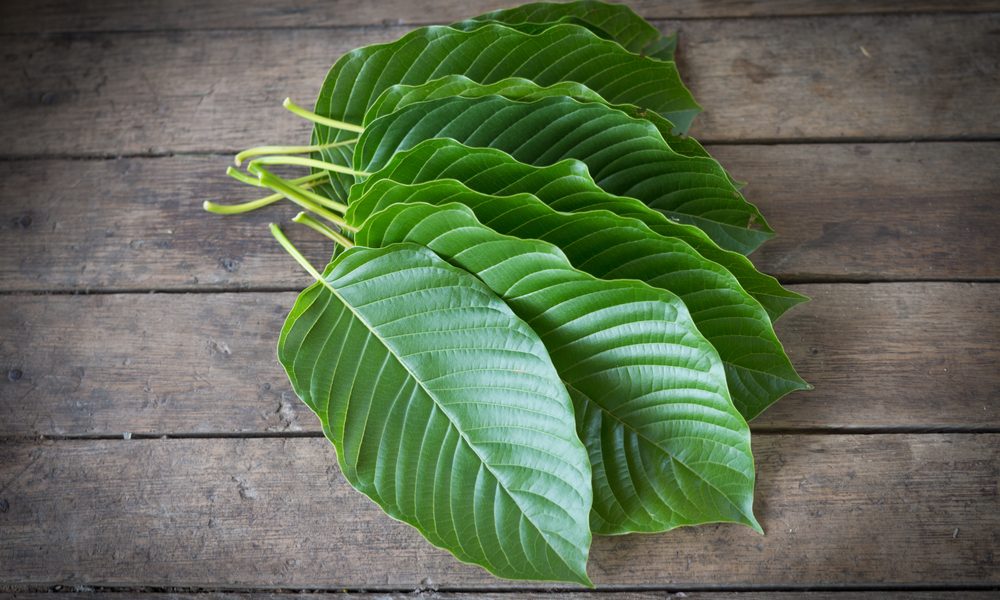The Ultimate Guide To Kratom
The post The Ultimate Guide To Kratom appeared first on High Times.
Mitragyna speciosa, also known as Kratom, is a tropical tree indigenous to tropical and subtropical regions of Southeast Asia. It has an ancient history of traditional, medicinal and ceremonial uses in Southeast Asia and Africa, including Thailand, Malaysia, Philippines, Myanmar (Burma), New Guinea and Thailand. But what is Kratom? And what is Kratom used for?
What Is Kratom?

Kratom is in the same plant family as the coffee tree. People use it recreationally in low doses as a stimulant. In high doses, it is a sedative. Most recently, researchers tout it as an effective treatment for a variety of ailments. These ailments include arthritis, diarrhea, fibromyalgia and restless leg syndrome. People can also use it for pain management and as a treatment for opiate addiction.
Case studies have suggested that suddenly stopping regular use may lead to withdrawal symptoms—but they are milder than those associated with opioids. Unlike opioids, the Kratom alkaloids produce little-to-no respiratory depression, and tolerance and dependence appear to develop more slowly.
According to Susruta Majumdar, a chemist at Memorial Sloan Kettering Cancer Center, your body would never get used to the perfect painkiller. Therefore, you would not need to keep increasing the dosage. The ideal analgesic would not have the high risk of addiction, withdrawal, or respiratory slowdowns that have turned opioid abuse into a massively fatal epidemic. The ultimate painkiller would not induce the seductive euphoria of common opioids. Or their less-pleasant side effects like constipation.
Although, according to the Sage Wisdom Kratom Guide, you may experience itching or nausea in the sedative-euphoric-analgesic dosage level, similar to the “waking-dreaming” stage of an opium trance.
The main psychoactive constituents of this plant are HMG, mitragynine and 7-hydroxymitra-gynine (7-HMG), indole alkaloids structurally related to yohimbine.
Just one of these chemical components would be an effective pain reliever, although when combined, they are even more so.
Legality
In August 2016, the U.S. Drug Enforcement Administration (DEA) announced that it intended to institute an emergency scheduling of the active ingredients of Kratom. They wanted to temporarily reclassify Kratom as a Schedule I drug.
This action brought about a strong reaction, including public demonstrations, petitions, and calls by Congress to overrule the decision. These events resulted in the DEA withdrawing its notice of intent.
On October 13, 2016, the DEA announced that it would withdraw its intent to temporarily schedule mitragynine and 7-HMG because of “numerous comments from the public.”
Kratom is currently illegal in Alabama, Arkansas, Indiana, Tennessee, Vermont, and Wisconsin. Thailand has criminalized Kratom since 1943 because they believe it is addictive. It is also illegal in Australia, Austria, Denmark, Malaysia, and Myanmar.
Without legal access to it, research will hit a roadblock.
Consumption

Kratom News
There are myriad, versatile ways to consume Kratom. In its native regions, consumers remove the stringy central vein from the leaves and then chew the leaves fresh. One may chew dried leaves also, although they are a bit tough. One can also steep the whole or crushed leaves like tea. Mixing it with another type of tea to mask the taste is also possible.
The preferred method of consumption is to grind up and powder the leaves. This way, one can pour the powder into empty vegetable capsules and swallow them. Consumers can also mix powdered plant leaves with hot water, or practically any other drinkable liquid, from Almond milk to a fruit smoothie. One can also add it to food, such as yogurt, applesauce, and even guacamole.
Technically, one can smoke Kratom, but it is impractical. The amount of leaves necessary to make a sufficient dose is too large a quantity.
Consumers can make kratom resin by boiling the water out of Kratom-powder-tea. Once the water has evaporated, the maker can roll the dehydrated gunk into pellets. The consumer can then take these pellets as is, or store them for later usage. One can also re-hydrate the stored pellets into tea later on.
Dosage
The relative amount of stimulation, or mood enhancement, sedation, or analgesia can vary, based on both the strain of Kratom chosen, and the dosage ingested.
The strain of Kratom is important because it will determine the correct dosage. The effects of premium quality Kratom are subtle, if one consumes two to four grams. Three to five grams will produce a mild stimulant effect. Four to 10 grams can produce either a stimulant-like effect or a sedative-euphoric analgesic, so be careful when experimenting with the dosage to achieve the desired effect. More than 10 grams is probably too strong for most people and will definitely be a sedative-euphoric analgesic.
With ultra-potent Kratom, experts recommend less than half of the amount suggested above.
Final Hit: The Ultimate Guide To Kratom

Kratom can be cultivated at home, as a houseplant, provided it is kept warm and preferably humid, like most orchids. The raw plant contains higher concentrations of mitragynine than 7-HMG; however, 7-HMG has a higher affinity for the opiate receptors.
One can purchase supplements on the Internet, but beware of unscrupulous merchants selling synthetic or fake variations of it.
Part of the DEA’s “reefer madness” reaction was due to a spike in related fatalities. However, advocates maintained that when people know what the plant is and how to use it, it is safer than prescription opioids. Medical examiners’ reports confirm that the relatively low number of fatalities attributed to Kratom (when compared with opiates) stem from consumers mixing the plant with other drugs. Usually, Schedule I substances.
There isn’t a final determination of the future status of Kratom at the time of this article. However, the DEA’s unprecedented reversal was a direct reaction to grassroots activism by many, who also continue to push for de-regulation of marijuana as a Schedule I drug.
The post The Ultimate Guide To Kratom appeared first on High Times.


